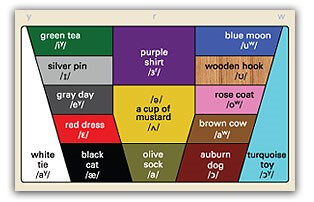Speaking perfectly doesn’t need to be the focus of your studying. If your answers are easy to understand, then a slight accent won’t affect your score. But if the scorers can’t understand you, they won’t repeat and repeat your answers until it’s clear. So even if you don’t need to speak exactly like a native, you should still spend some time working on the parts of your accent that make it hardest for native speakers to understand you—after all, the easier you make your test graders’ lives, the better your life will be.
But it can be hard to decide how much work your accent needs. There are a couple of ways you can find this out. The best way is to ask a native speaker. It’s difficult to get an honest answer that way, though, unless you’re speaking to a teacher who knows the value of honesty. Many native speakers might say they understand and that your accent is great even if that’s not true, because it’s a slightly sensitive topic—they don’t want to insult their friends, of course.
The other way isn’t as effective, but there’s no danger of dishonesty: compare yourself to a native speaker. That is, you will get a recording of a native speaker, then you will record yourself saying the exact same thing. What’s different between them? How do you sound in comparison to the native speaker?
Identify the specific problems
Notice that above I said to work on the parts of your accent that are problematic. American English has about 40 unique sounds, all of which you can practice individually. A lot of people with obvious accents only need to improve their pronunciation of a few sounds to dramatically improve their accents. You may need to ask someone to help you figure out what sounds are hardest for you, but once you do, you can try isolating those sounds and practicing them in different ways. This tool from the University of Iowa can help you figure out exactly how each sound is pronounced.
Use colors to practice vowels
Vowels (a, e, i, o, u) are usually harder to get exactly right than consonants (f, b, x, and so on). I recently learned of an interesting system to help people with this problem. The system involves connecting 14 of the most common vowel sounds in American English with a color whose name uses that sound. For example, the “ay” in “gray” sounds the same as the “a” in “same,” or the “ei” in “weight.” By practicing these colors along with words that use the same vowel sounds, you help not only your pronunciation, but also your memory of the pronunciation of new words. Check out the chart below, and click here to check out the site it came from.

Photo by allmomgot.blogspot.com
Look at the bigger picture
Once you’ve worked on individual sounds, you need to take a step back and look at whole phrases and sentences. Even though I said there are only 40 sounds in English, a lot of meaning comes not from these sounds, but from intonation, or changes in pitch. For example, in English class, you probably learned that declarative sentences go down at the end, and questions go up. This is basically true, but there are smaller changes throughout the sentence that give extra meaning. If we didn’t have these little changes, and your declarative sentences just went steadily downward, by the end of the sentence I wouldn’t be able to hear you. And if your questions went up continuously over the course of the sentence, you would probably scare people, and they wouldn’t want to talk to you.
Practicing intonation
The easiest way to learn intonation is to imitate native speakers. One way that I like to do this is by taking clips from the media—from a language self-study course, if you can find it—and doing a variation on what one prominent polyglot (speaker of many languages), Alexander Arguelles, calls “shadowing.” If you’re using complicated material (not intended for language learners), listen to it a few times first so you know what it’s saying. Look up any words you don’t understand. Then listen all the way through, repeating everything the speaker says as soon as he or she says it. Pay special attention to replicating the speaker’s intonation. This variation on shadowing requires a huge amount of concentration, which you may not have every day. For those days, just pick a sentence or two to imitate, and say them to yourself as many times as you can over the course of the day. By listening and repeating and listening again, you will adopt the natural speech patterns of the native speaker.






Leave a Reply